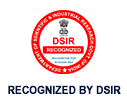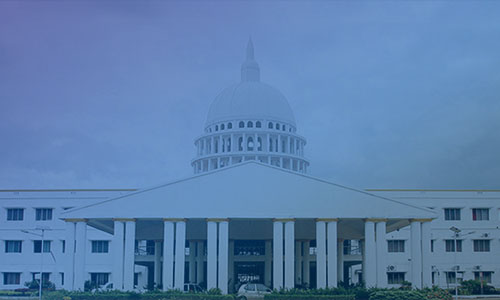I have always been fascinated about the use of statistics
and data in making future assumptions and predictions. Being a student of AI,
I found my interests in Predictive Analytics that helps in making future predictions about unknown events
with the help of techniques from data mining, statistics, machine learning, math modeling, and artificial
intelligence. With the help of past data, it makes predictions. We use predictive analytics in our day-to-day
life without giving much thought. For example, predicting sales of an item (say flowers) in a market for a
particular day. If it is Valentine’s Day, the sales of roses would be high! We can easily say that the sales
of flowers would be higher on festive days than on regular days.
.png)
While performing predictive analytics, we ought to find the factors responsible, gather data, and apply techniques from machine learning, data mining, predictive modeling, and other analytical techniques to predict the future sales or happenings. The insights from the data include patterns and the relationship among different factors that might be previously unknown, which is very interesting. Unraveling those hidden insights is of more worth than we think it is. Businesses use predictive analytics to enhance their processes and to achieve their targets. Insights obtained from both structured and unstructured data can be used for predictive analytics.
Data Insights
In recent years, many organizations have started to collect vast amounts of data with a hope that, if they harvest enough of it, it will eventually give rise to relevant business insights. Even leading companies like Instagram and Facebook are providing insights to business account holders.
But, data in its raw form is not useful no matter how large it is; more the data to wade through, the more difficult it is to separate valuable business information from irrelevant. To gain insights from this data, data scientists use deep learning and machine learning algorithms to find patterns and make predictions about future events. Some of these statistical techniques include logistic and linear regression models, neural networks and decision trees. Some of these modeling techniques use initial predictive learning to make additional predictive insights.
Applying PA in Real-World
Predictive models are used for all kinds of applications, including weather forecasts, creating video games, translating voice to text for mobile phone messaging, customer service, investment portfolio development, and many more. All of these applications use descriptive statistical models of existing data to make predictions about future data. They're also useful for businesses to help them manage inventory, develop marketing strategies, and forecast sales. It also helps businesses in highly competitive industries survive, such as health care and retail.
Predictive analytics can be deployed in across various industries for different business problems by informing decision-making within real-world situations.
Predictive analytics plays a key role in Advertising and Marketing. Companies can use models to determine which customers are likely to respond positively to marketing and sales campaigns. Business owners can save money by targeting customers who will respond positively rather than doing blanket campaigns. Executives and business owners can take advantage of this kind of statistical analysis to determine customer behavior. For instance, the owner of a business can use predictive techniques to identify and target regular customers who could divert to other competitors.
.png)
Financial services use machine learning and quantitative tools to predict credit risk and detect fraud. Credit scoring makes extensive use of predictive analytics. Investors, financial professionals, and business leaders can draw on this technology to help craft investment portfolios and reduce the potential for risk by taking certain factors into consideration, such as age, capital, and goals. When a consumer or business applies for credit, data on the applicant's credit history and the credit record of borrowers with similar characteristics are used to predict the risk that the applicant might fail to perform on any credit extended. This use of technology allows it to both customize personal services for clients and to minimize risk.
Forecasting is essential in Manufacturing because it ensures the optimal utilization of resources in a supply chain. Predictive modeling is often used to clean and optimize the quality of data used for such forecasts. Businesses can determine the likelihood of success or failure of a product before it launches or they can set aside capital for production improvements by using predictive techniques before the manufacturing process begins.
Data and predictive analytics play an important role in Underwriting. While insurance companies examine policy applicants to determine the likelihood of customers, Predictive models that consider characteristics in comparison to data about past policyholders and claims are routinely used by actuaries.
Predictive analytics in Health care is used to detect and manage the care of chronically ill patients, as well as to track specific infections. By using predictive analytics in healthcare, hospitals can make more informed decisions about which treatments to offer patients and how best to tailor those treatments to individual needs. Predictive healthcare analytics can also help to identify patients who are at risk for complication and provide interventions before problems occur.
Netflix and PA!
Well, what could be a more real example than Netflix! Data collection is very important to a company like Netflix. The way they perform predictive analysis is very interesting. It collects data from its customers based on their behavior and past viewing patterns. It uses that information to make recommendations based on their preferences. This is the basis behind the "Because you watched..." lists you'll find on your subscription.
For one of the shows, “House of cards”, Netflix captured 30 million “plays”, 4 million ratings, 3 million searches….
Take a minute to digest that.
.png)
By this, Netflix collected certain data points, such as customer interactions on the app, responsiveness to shows/movies, date, time, location & the device being used to watch, when & where you paused / resumed, how many shows you complete / leave midway, how many minutes / hours / days / weeks you take to complete a series / movie, how many times you search before choosing the show / movie, queries you use to search your shows / movies, shows preferred by men / women / children / teenagers, feedback & ratings of subscribers, scrolling behavior, and many more…
Based on the research conducted by Netflix, their personalized recommendations have turned out accurate for 75% of subscribers!
Amazing Right?
Understanding Why
An organization that knows what to expect based on past patterns has a business advantage in managing inventories, workforce, marketing campaigns, and most other facets of operation. Organizations are turning to predictive analytics to help solve difficult problems and uncover new opportunities. Common uses include, detecting fraud, zero-day vulnerabilities and advanced persistent threats; optimizing marketing campaigns to help businesses attract, retain and grow their most profitable customers; improving operations to function more efficiently; reducing risk.
.png)
The study in predictive analytics could provide a rigorous, modern, and foundational education in an area of major importance in society. It will equip you in having a deep and balanced knowledge of data science, insurance, and finance to expertly address problems of predictive analytics and risk management. Being a part of AI, Machine Learning and Data Science, this scope of study proves to be a vibrant topic in the recent times. With high scope of opportunities, this study is in demand for specializations and expertise. While the world is updating its techminds, we as budding engineers must learn to explore more of what the world has for us online and offline.









.png)

.png)
.png)
.png)
